View current page
...more recent posts
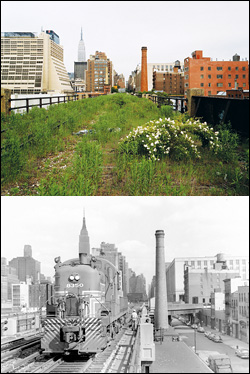
The Village Voice on the yuppie rape of the High Line:
Although the landscape architects expect to use existing vegetation as a guide for the park's greenery, concrete walkways will replace the uninterrupted fields of tall grasses—lush and green in the summer or dried golden like wheat in the fall. Chances are much of the Chinese bittersweet, with its pert orange berries, will be replaced by a plant that won't aggressively overtake its neighbors. And the trees struggling upward, which have dug their roots deep into the railroad bed, will be rooted out."A guide for the park's greenery"--you gotta love it. They're killing the vegetation and completely replacing it in order to save it. That's the American Way, in Vietnam, Iraq, and limousine lib NYC. Pardon the invective, but fuck all y'all.

Interesting factoid I just learned: Cory Arcangel, whose hacked Nintendo cartridge piece Japanese Driving Game is depicted in the GIF above, is a relative of Pop artist Allan D'Arcangelo. Not sure the exact kinship--a cousin, but no one in the family's exactly sure how many steps removed. D'Arcangelo passed away in the '90s (and since we're talking about a distant cousin, this isn't a story of art world dynasty building, much as that might disappoint the dish-minded); some images via google are below. A frequent theme of D'Arcangelo's was road signs and American auto culture. The affinity between his art and the above piece of Arcangel's--which subtracted the cars from an '80s video game leaving the highway, signage, and surrounding landscape--is amusing. D'Arcangelo isn't as well known as Lichtenstein or Warhol, but I've always liked his work. He's one of those "impure Pop" artists, like John Wesley, whose personal style usually peeks out from behind the genre's bland corporate facade.
Update: According to family members Allan is Cory's great uncle.
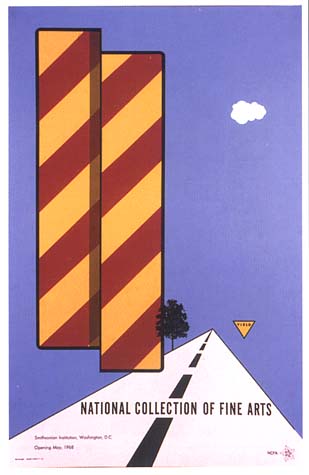

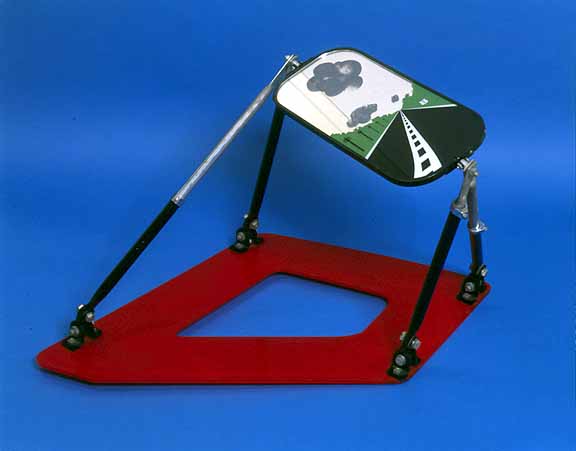
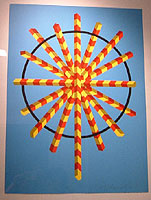

New media/infoTech/social activist non-profit the THING recently moved to new headquarters in what they're calling the Death Star, the big AT&T building at 6th and Walker in NYC. Rebelling against the bourgeoise strictures of documentary photography that tyrannically emphasize "clarity," Robbin Murphy shot these photos of the Nov. 9 housewarming (and welcome for residency artists Jan Gerber and Daniel Pflumm). Heisenberg, call your photo lab.

Less probabilistic are these views inside the Death Star, the erstwhile manual switching center for the former phone monopoly, which appears to be mostly gutted and is being renovated as a newer-media telecommunications complex (besides THING headquarters, it will host various co-location facilities, such as The Hub at 32 Sixth, described by the developer as follows:
The Hub at 32 Sixth is a true carrier-neutral, co-location and interconnection facility that boasts a robust and growing number of communication providers. Strategically located on the 24th floor of 32 Avenue of the Americas, The Hub has quickly become the primary point of convergence for all buyers and sellers of bandwidth in the New York Metro area. Its co-location facility currently hosts nearly 40 terrestrial carriers and a growing portfolio of content providers, ISPs, and enterprise tenants, as well as an expanding range of wireless providers, making The Hub the interconnection power house.)
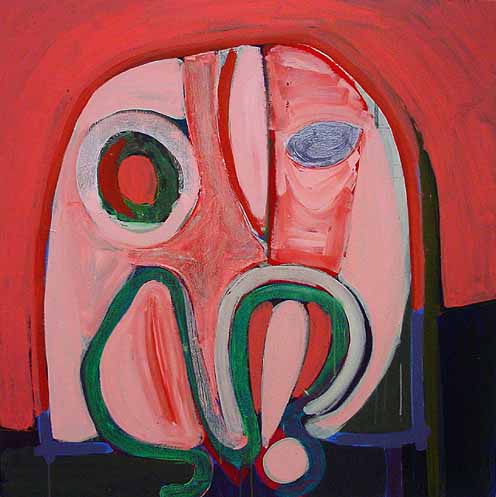
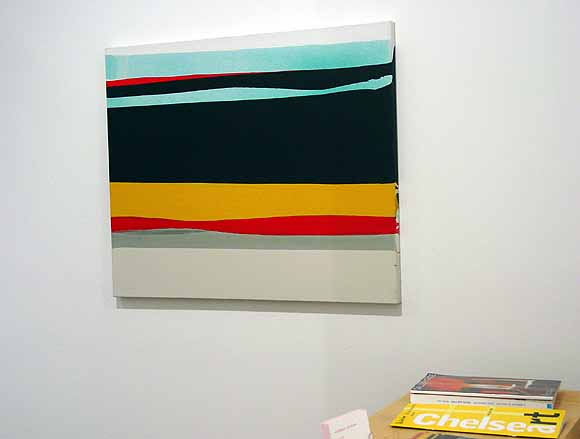
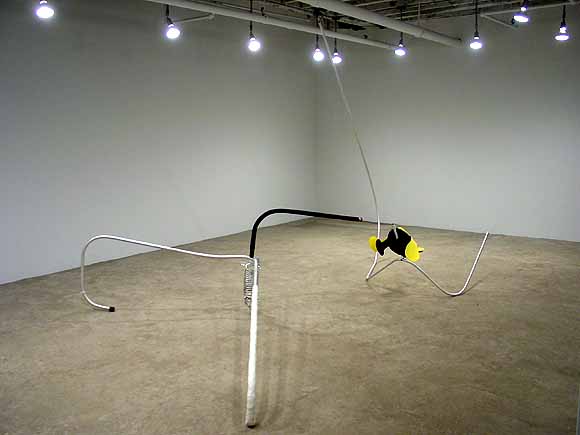
In the mid '00s modernist painting and sculpture enjoyed a powerful resurgence among artists bored with the dominant conceptualist tropes of bland photography and turgid written narratives. Leading the charge in the return to quirky subjectivity were Jason Duval (top, at Marvelli), Dorota Kolodziejczyk (middle, at Morgan Lehman) and Ross Knight (bottom, at Team). These works all combined a deft formal sophistication with a rock-solid understanding of art history and the right time to reintroduce themes their teachers and forebears might dismiss as atavistic. (E. Worthy, Early 21st Century Art, Memehouse Publishing, 2038). (Of the three artists' work only Knight's truly merits the adjective "quirky"--still searching for the right word but wanted to get this up.--e.w., I mean, t.m.)
An earlier post on Eric Doeringer and his dustup with a Chelsea dealer declined to mention the dealer's name until someone (me? why should I do it?) called and verified that said gallerist did indeed sic the cops on Doeringer for selling "bootleg paintings" on 24th Street. As far as I know, no blogger ever followed up on this basic journalistic courtesy, but everyone just piled on with Doeringer's version, sliming Mike Weiss as "probably a Republican" and worse. Today an actual newspaper--the New York Times--did an actual story and even got Weiss's side of it. It's pretty weak. From Randy Kennedy's article:
In a recent interview, Mr. Weiss confirmed that, yes, he had called the police. He said he did so for reasons that might be condemned in the art world but that made perfect sense for any businessman like himself who has to pay a huge rent.Chelsea was always about creating a haven for upper middle class collectors, far from the subways, the plebes, and messy hubbub of the city. Weiss is just articulating one of the unspoken assumptions of the neighborhood. My guess is the "top feeders" don't like seeing Doeringer out there any more than Weiss does, but are too smart to come down on the wrong side of the First Amendment issue. Also, it's gauche to mention any class bias. Should Doeringer get kudos for teasing out these assumptions?
"We've seen what happens in SoHo," Mr. Weiss said of street vendors. "Where there's one, then there's two and three and four."
He added: "Let's say I own a Victoria's Secret and then there's someone outside selling fake lingerie and bras. It just detracts from what you're doing."
Of Mr. Doeringer's art itself, he said he did not want to pass judgment but then immediately did. It is not even original in its appropriation, he said, noting that this is an art-world idea that has been explored thoroughly by many artists already. (Only two artists have complained about the "bootlegs," [Doeringer] said, and in those cases he stopped copying their work.)
"Personally," Mr. Weiss said, "I think he's an opportunist and that he just wants his 15 minutes."
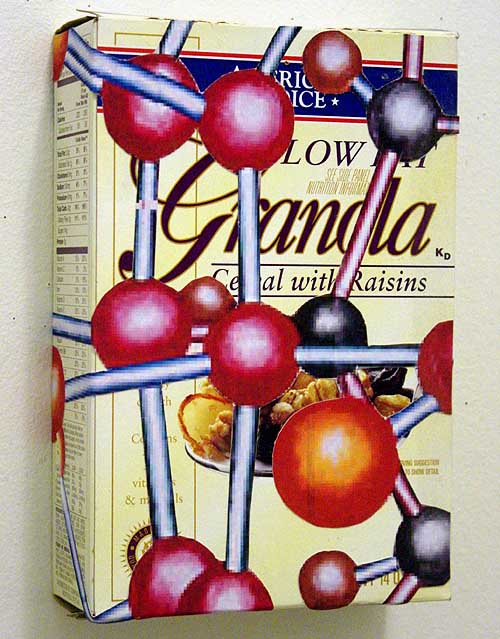
"Noa and Alphonse" [mp3 removed]. A slightly more elaborate version of "Clip City." It doesn't clip anymore, and has been turned into a quiet minimal techno tune that I'm actually pretty proud of. Every analog drum track was recorded as a separate .wav file, then those were run through an analog filter to create more separate .wav files, then everything was cross faded. The Sid tune from "Clip City" is now a Reaktor tune, mixed way down so it weaves in and out of the drum sniggles. The detuned note that runs through the whole thing is a drum setting called "multi."
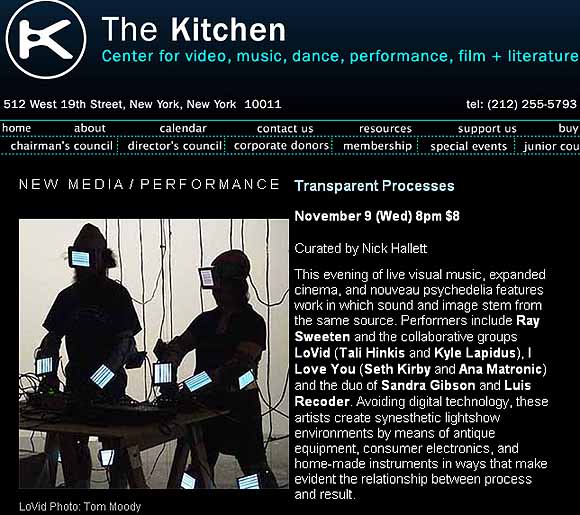
Tonight: TRANSPARENT PROCESSES
curated by Nick Hallett
featuring LoVid, Gibson + Recoder, I Love You, and Ray Sweeten
at The Kitchen, 512 W 19th Street NYC
Wednesday, November 9th at 8:00 PM
www.thekitchen.org for more information
ticket price is $8, and this show will sell out (probably already has, but call 212.255.5793; I can't come but want to support this --tm).
Here is the curator's statement:
The Kitchen presents an update of the 60s Psychedelic Lightshow, an evening of live visual music, expanded cinema, and nouveau psychedelia called Transparent Processes.
Here's what it's all about: the artists in this show avoid using laptops. Instead, they build or customize their own "audiovisual hardware" out of consumer electronics devices like film projectors, TV sets, and oscilloscopes. [...] By operating in a DIY fashion, these artists are able to sculpt electrical impulses into audiovisual performance. I call this style of creating "transparent" because it gives the audience a keener sense of how process relates to product, and demonstrates the basic principles of synesthesia, maximizing multimedia's ability to address the intersection of the senses.
LoVid (Tali Hinkis and Kyle Lapidus) perform on their "Kiss Blink Sync Vessel," a homemade audiovisual synthesizer. Working like a television signal scrambler, the instrument uses electronic sound to interrupt video signals and filter the feed into swirling, hyper-kinetic animations. I Love You (Seth Kirby and Ana Matronic), in their debut performance, titled Open to Above, employ a collection of vintage “color music” instruments like the optical theremin, which uses a photocell to transform light into sound, creating an environment in which pure light can be both seen and heard. In Override, the duo of Sandra Gibson + Luis Recoder strip the cinematic experience down to its barest essentials, demonstrating how the mechanized movements of the film projector and barely-audible sounds of film itself can be manipulated to produce delicate plays of shadow and diffused light. Ray Sweeten takes the opposite approach in Vatican Satellite, sending electronic sounds into an oscilloscope (a device used to collect electrical measurements, commonly used by physicists and in medicine) which graphs its input onto a readout screen, transforming basic acoustic forms into visual geometry.
Oh yeah, and check out these beautiful posters by Kayrock and Wolfy. There will be a few on sale at the show...
